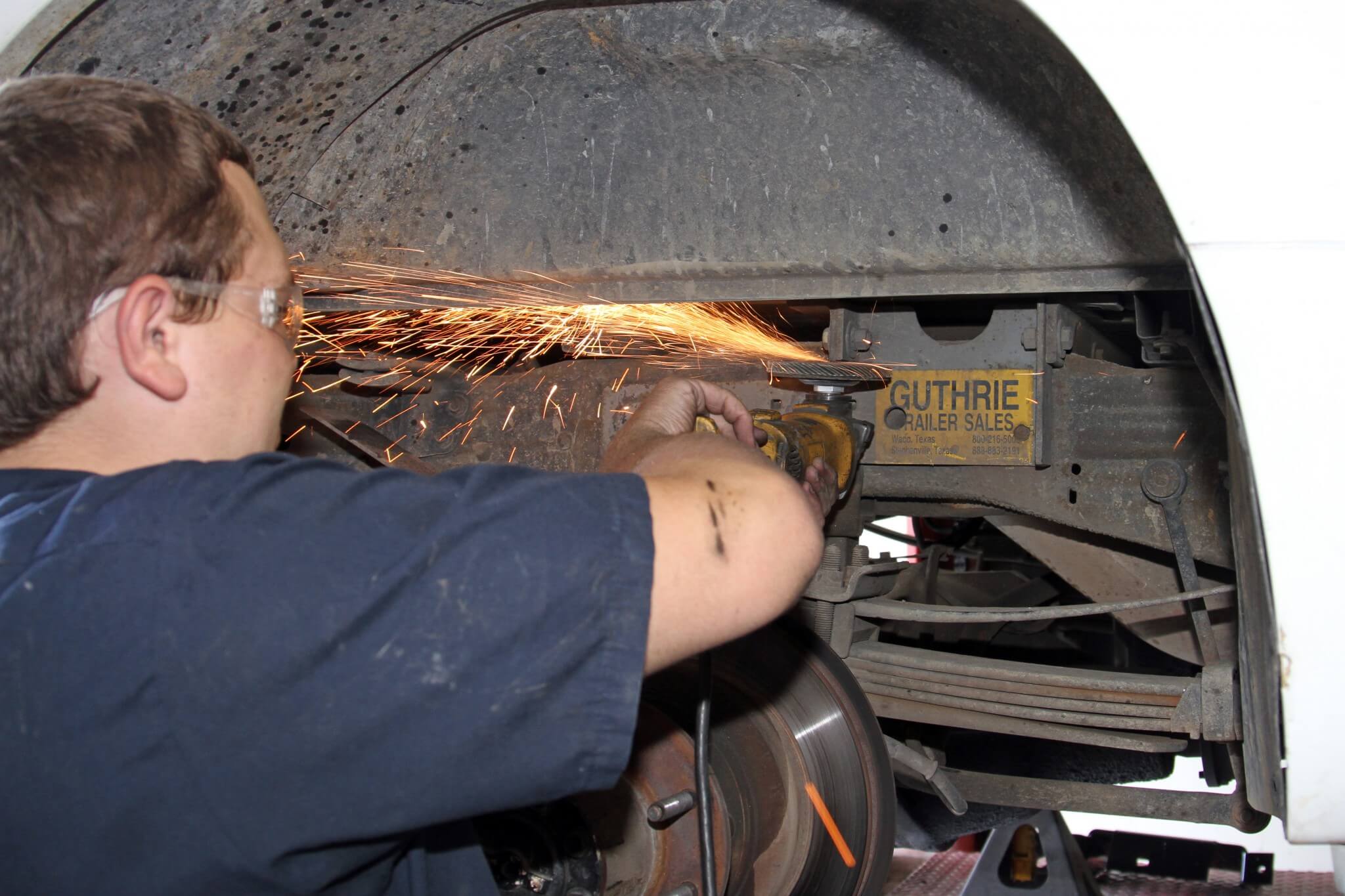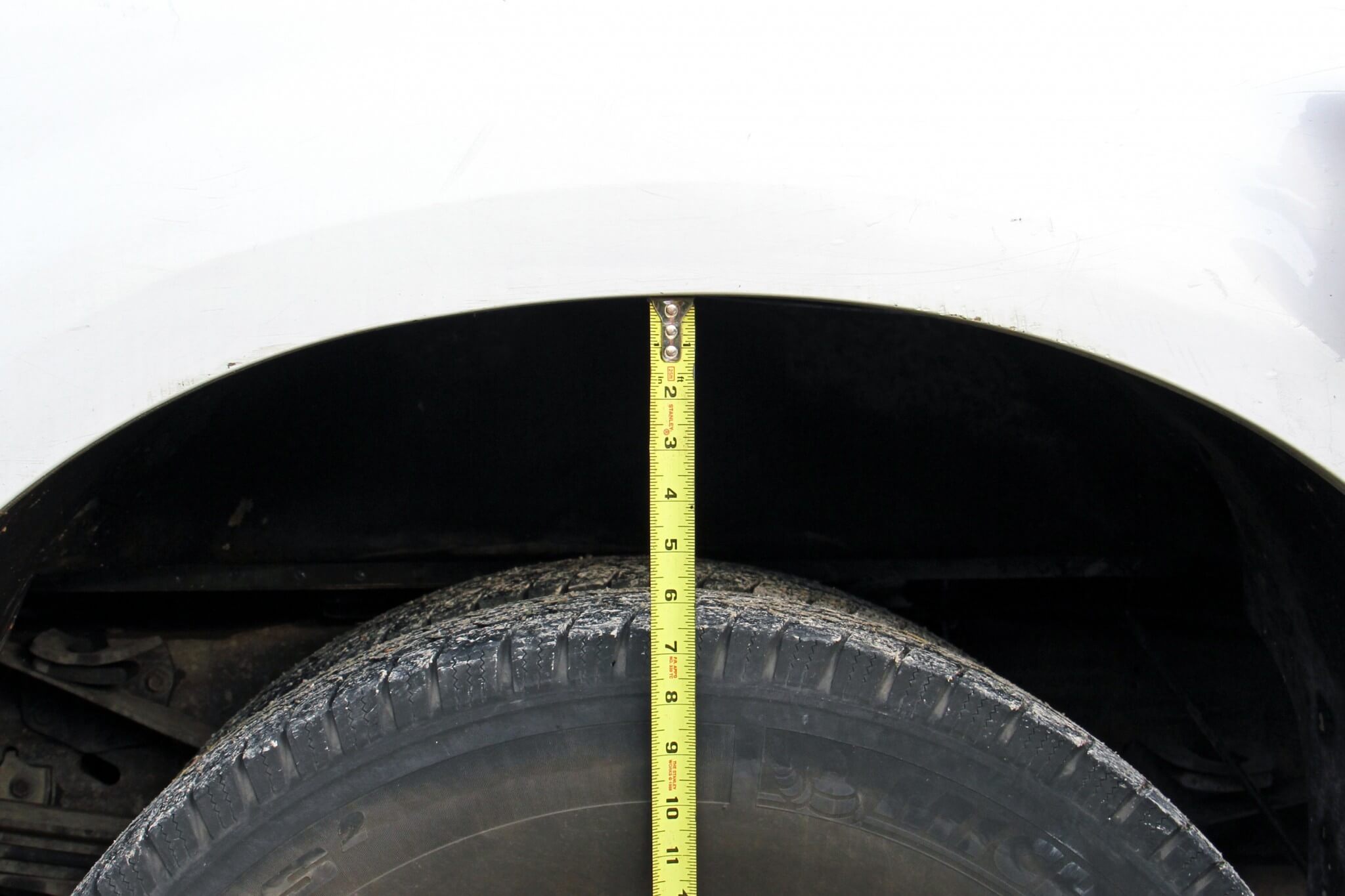Project 7.3L Work Truck, Part 7: Installing Air Lift Air Springs to Improve the Towing Experience
As our 7.3L Power Stroke Work Truck project draws closer to completion we wanted to turn our attention back to towing enhancement. With new brakes and an engine brake installed earlier (see the August 2014 issue of Diesel World) we know it can stop well. In addition, thanks to the performance engine and transmission improvements we’ve completed, the truck can easily get heavy loads moving. To improve the truck’s safety and comfort while towing and hauling concrete, contractor Vincent Uriah once again turned to the team at Swamp’s Diesel Performance in La Vergne, Tennessee, this time to have a set of Air Lift air springs installed on his 2003 Ford F-350 work truck.
His dually has enough power to tow and haul nearly anything he needs for work, but at times the large Ford squats in the rear when heavily loaded. Obviously driving with the tail end of your truck sagging low not only looks goofy; it can also be dangerous to you and others who share the road with you. With weight transferred to the rear axle, and away from the front axle, steering and braking can be adversely affected. This makes your truck difficult to control, especially in panic situations. Another seemingly simple issue that arises when the rear squats and the front lifts is vision impairment. The higher hood and fenders can obstruct your sightline when driving and your headlights will not illuminate the road properly at night, possibly blind oncoming traffic even on low beam. Tail squat can also cause trailer sway issues.
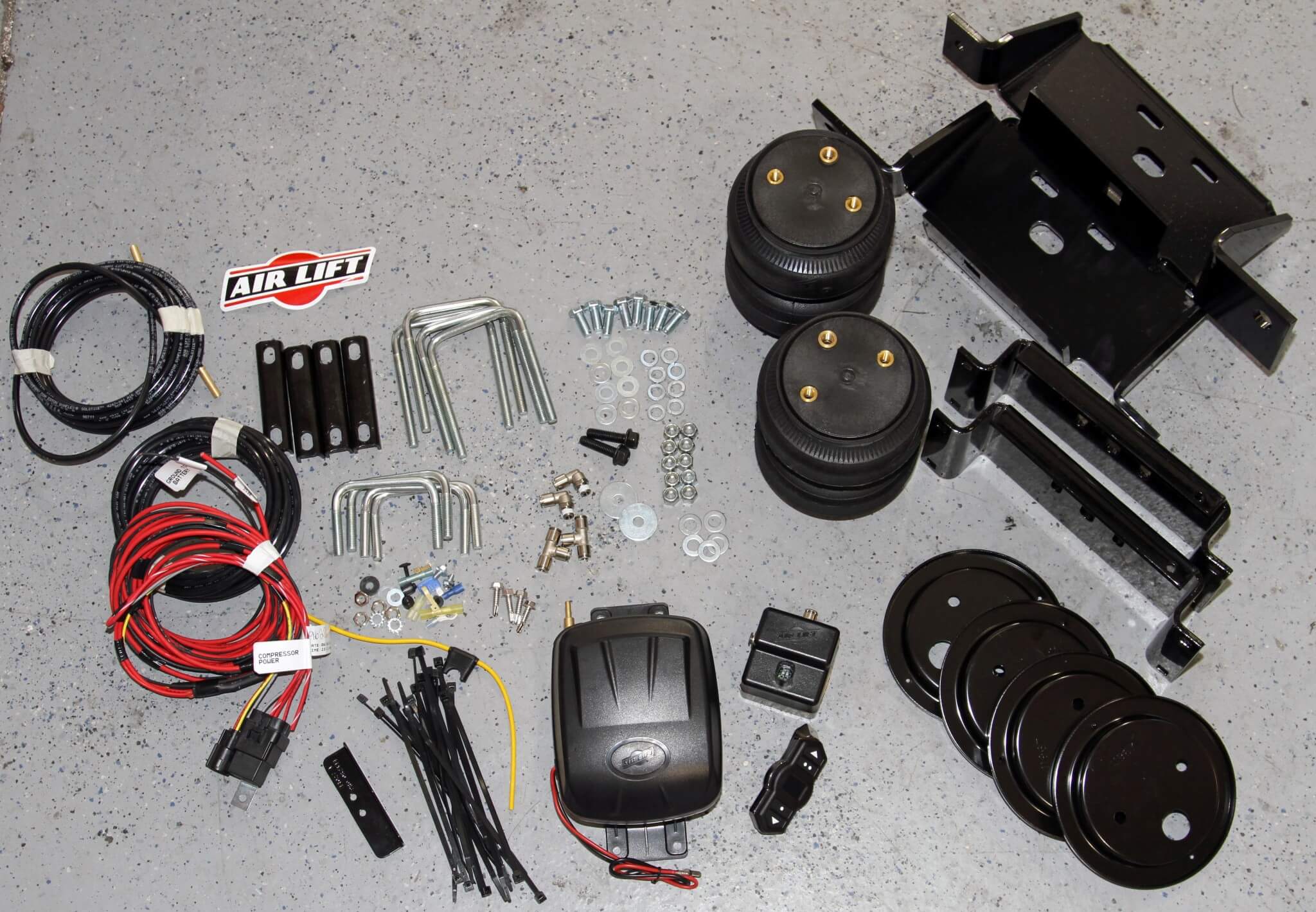
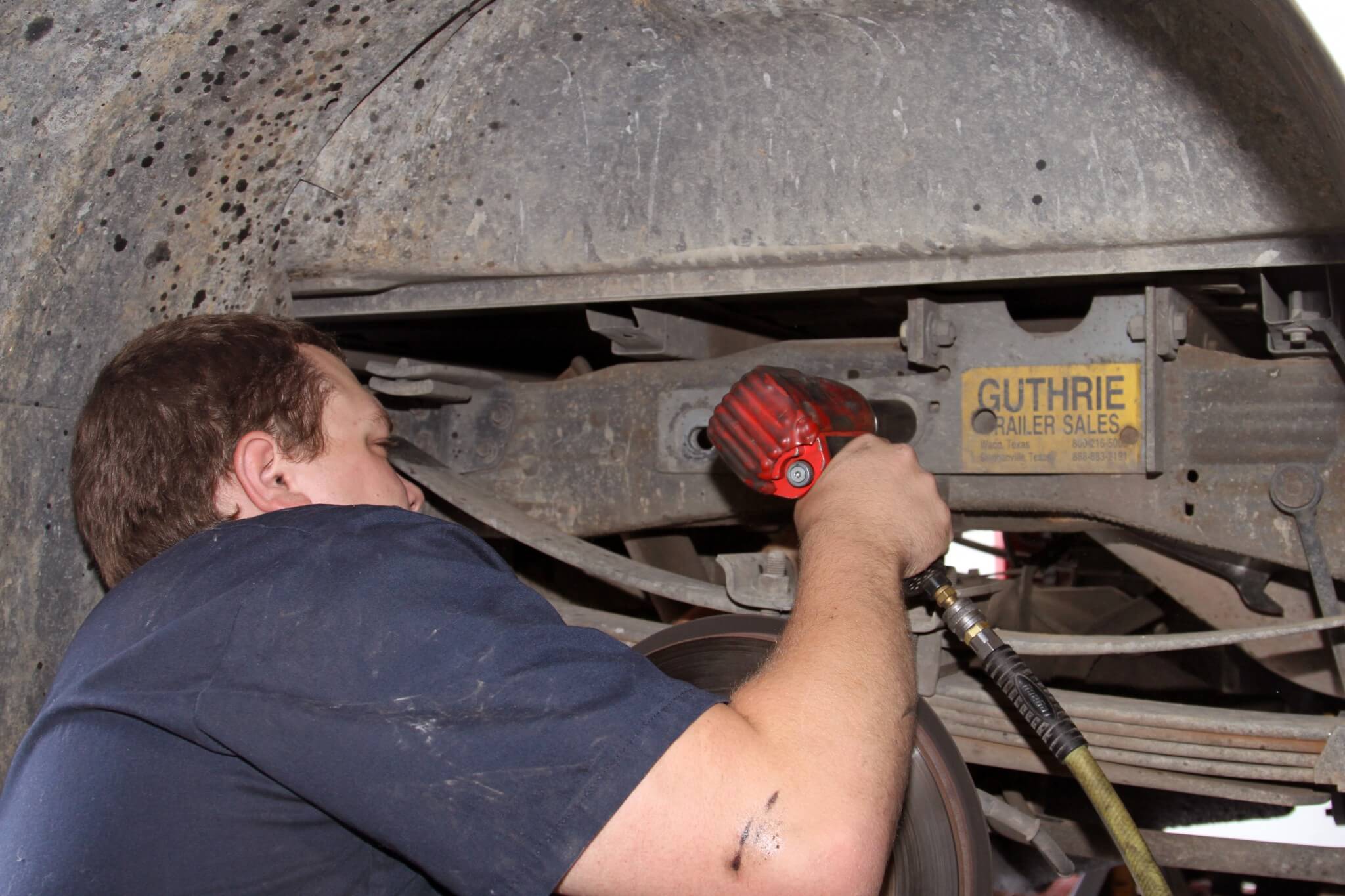
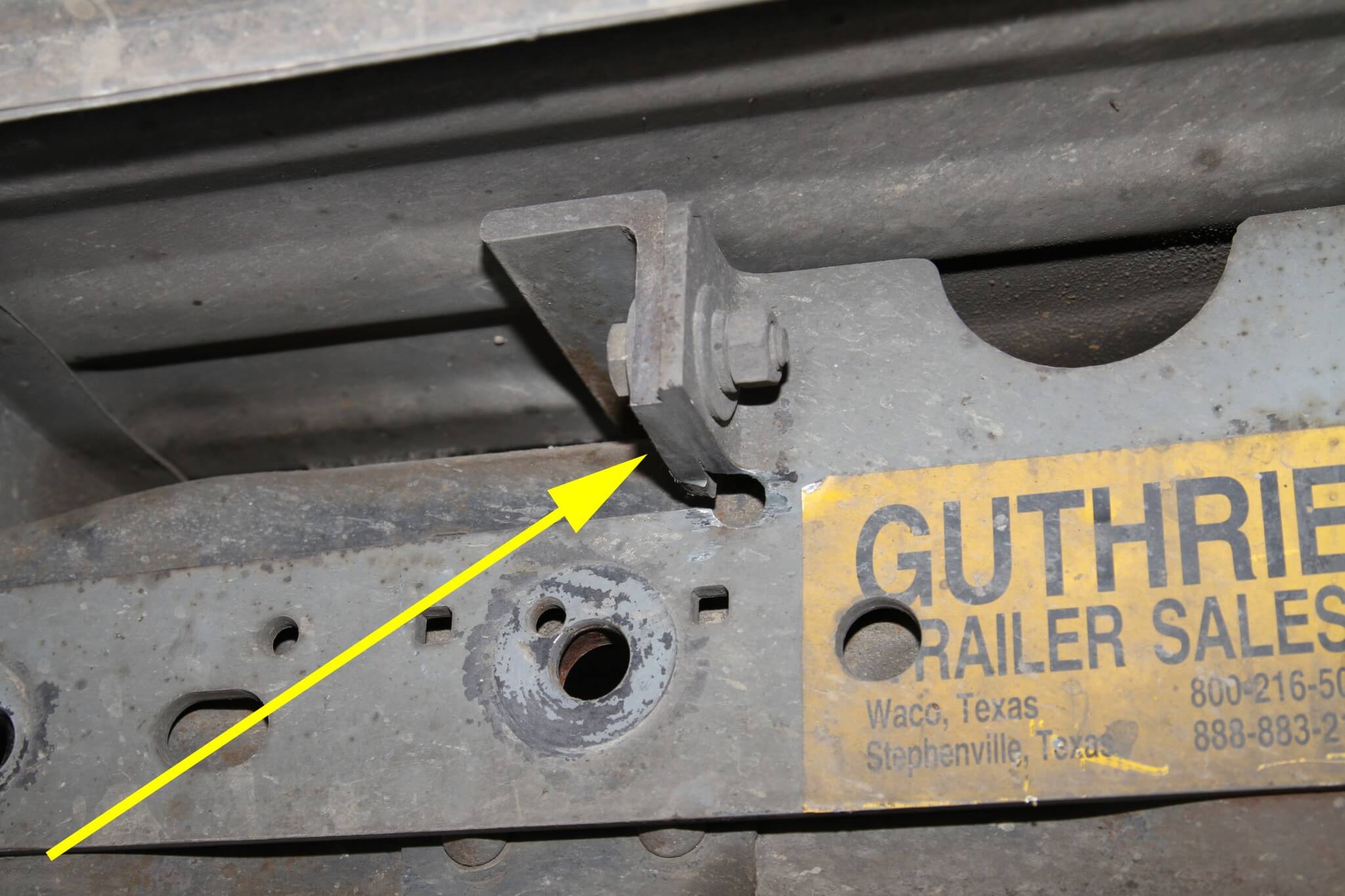
Air Lift offers many air spring kits for our diesel trucks including ones designed to work with most gooseneck hitch mounts installed. Uriah opted to go with the top-of-the-line LoadLifter 5000 Ultimate air spring kit. This kit is designed to work with the B&W gooseneck hitch already installed on the truck. The 5000 Ultimate air spring uses bellows with an internal jounce bumper. This allows it to be safely used fully deflated for better ride comfort when unloaded. The internal jounce bumper also helps to reduce or even eliminate harsh jarring on rough roads and it’s designed to work progressively with the truck unloaded, lightly loaded or fully loaded.
The air spring kit came complete with thick steel mounting brackets, installation hardware, air springs, air lines, fittings and everything else needed. It includes Schrader valves so that it can be used without an on-board air compressor system. However, to make operating the system more convenient for Uriah he opted for the WirelessOne remote-controlled compressor system. The WirelessOne comes with a small self-contained compressor and separate manifold/control valve. This compressor tees into the air lines to inflate or deflate the air springs as needed. It also uses a four-button wireless remote control with a selectable-color LCD display to show current pressure. The remote can be clipped onto the sun visor when not in use. The system can also be filled from an external air compressor, in the unlikely event of a problem with the onboard unit.
Air Lift’s WirelessOne compressor system has three user-defined memory settings on the remote. You can lock in frequently used pressure settings like fully loaded, unloaded and lightly loaded. It also has simple up and down buttons that can be used to raise or lower pressure in the air springs in 1-psi increments from the 5-psi minimum up to the 100-psi maximum recommended pressure ranges of the LoadLifter 5000 Ultimate system. It’s a single-path system, meaning it maintains the pressure in both left and right air springs equally. Using the remote, the owner can load the truck, then stand back and adjust the pressure to properly level the load without having to hop in and out of the truck to adjust the pressure from a dash-mounted switch.
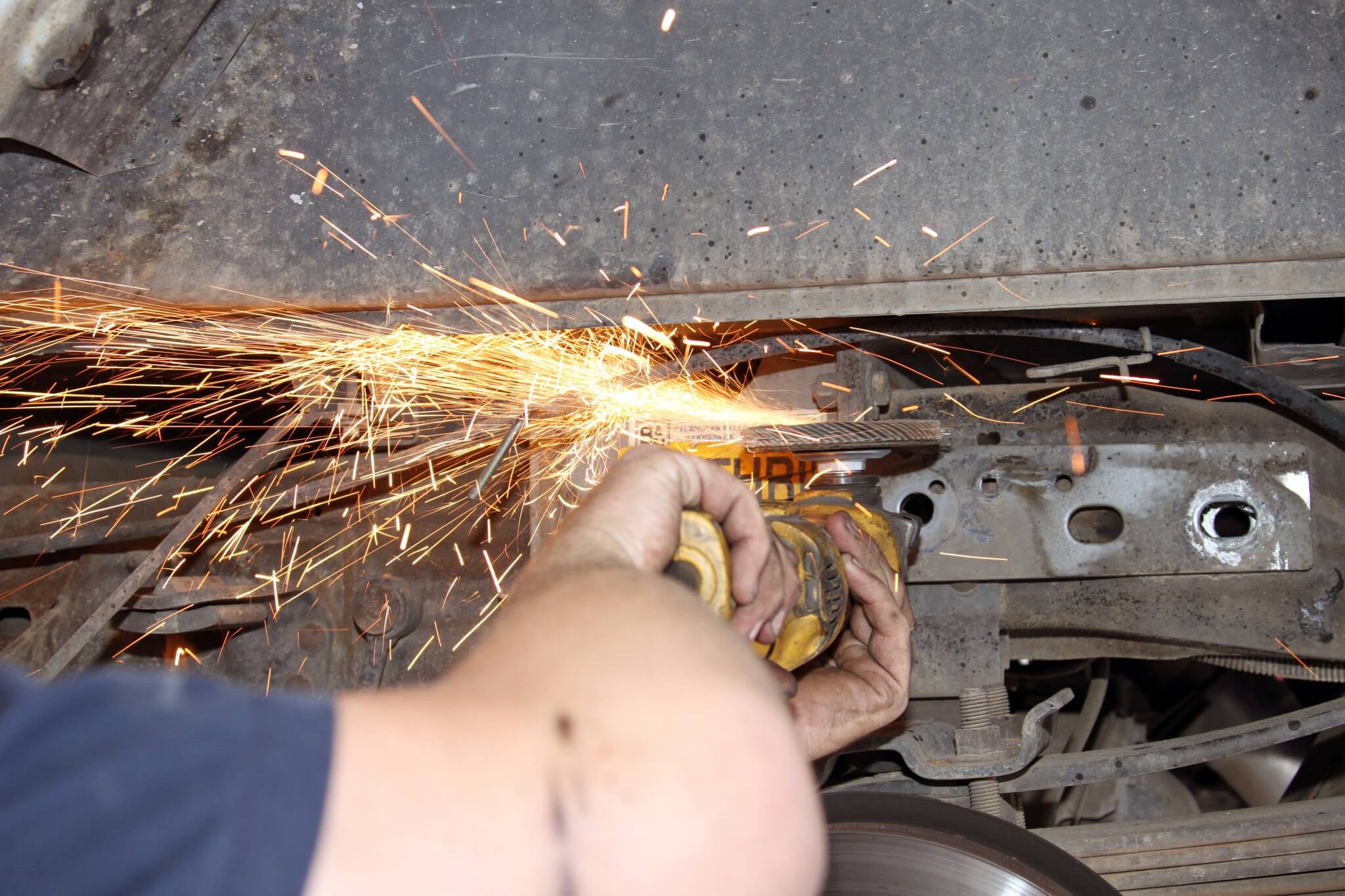
After the bolt was removed, he ground away the bottom of the B&W plate in the same way as the passenger side of the truck.
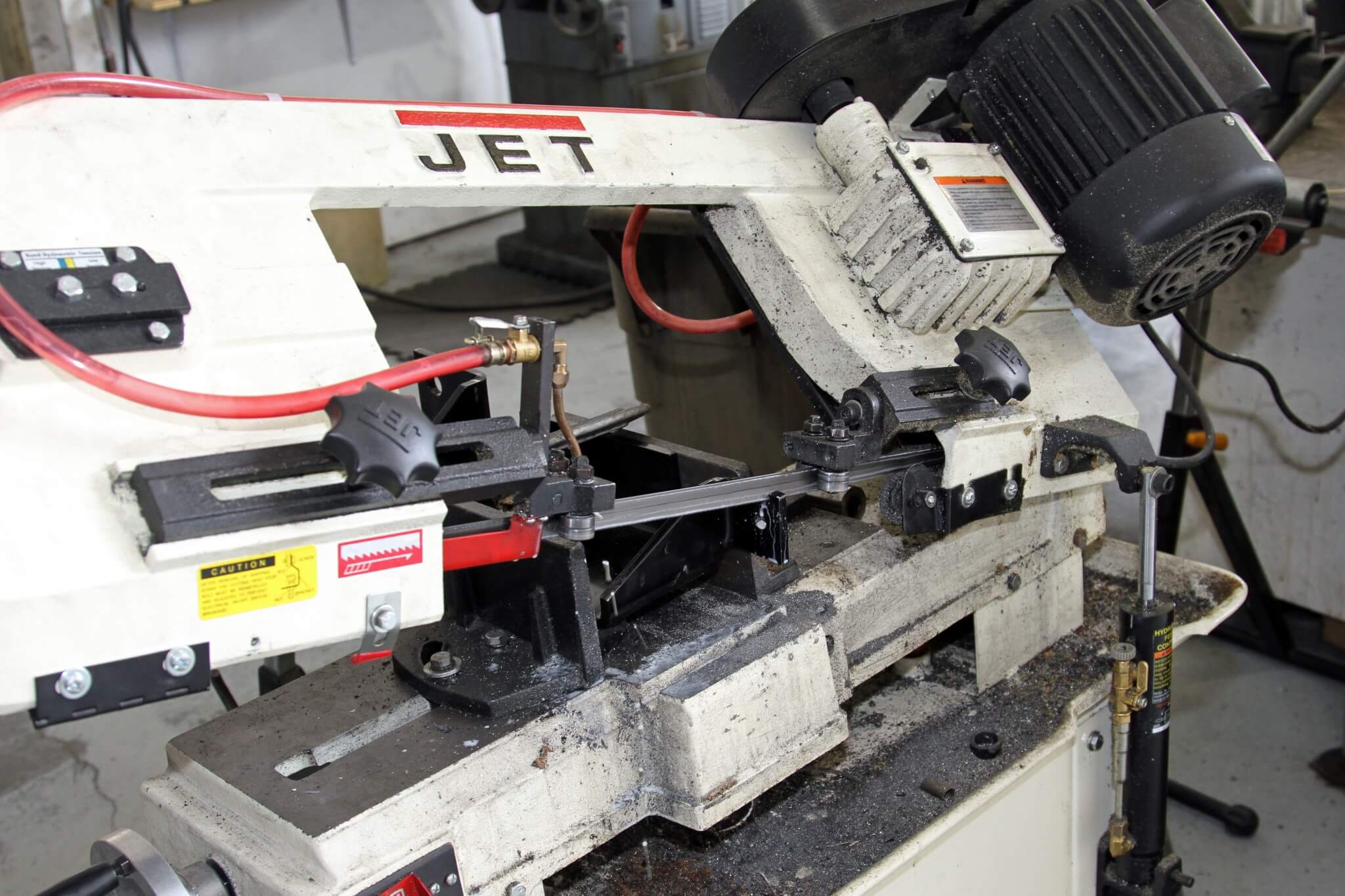
Swamp’s Diesel Performance installer C.J. Carter completed the installation of both the LoadLifter 5000 Ultimate air spring system and WirelessOne compressor system in about six hours. This included time for lunch and our typical photography slowdowns. Most DIYers should be able to complete the installation in less than a day in your driveway or garage. As always when working in, under and around your truck, be sure to practice safe shop techniques. Also pay special attention to wiring and hose routing to avoid high-heat areas as well as moving parts to avoid air line damage.
The installation instructions are easy to follow and the systems are nearly bolt-on items. Modifications are needed to the B&W hitch brackets already mounted to the frame as well as the upper air spring mounting bracket. However, these are minor. Carter used a grinder to trim the lower edge of the bolt flange on the B&W side plate on each side of the truck. Then he used a band saw to cut about a quarter-inch off the leading edges of the upper air spring brackets. Once the cutting and grinding was done he gave the pieces a fresh coat of paint to prevent rust and assembled the components. The modified setup is virtually the same as they would be without the B&W hitch. The one exception is that the upper mount uses the large 3/4-in. bolts through the B&W side plate, to secure it to the frame and side plate.
Air Lift supplies mounting hardware to mount the lower air spring perch to the truck with or without overload springs, so you will have some leftover parts when you complete the installation. Carter installed and aligned the air springs, and then he routed and installed the air lines. The compressor and manifold were mounted below the driver-side rear corner of the cab and the wiring was run along the frame. Under the hood, a connection was made at the battery. Carter used wiring loom for additional abrasion protection over the air lines and wiring harnesses, and secured everything with the supplied zip ties, avoiding heat sources and moving parts.

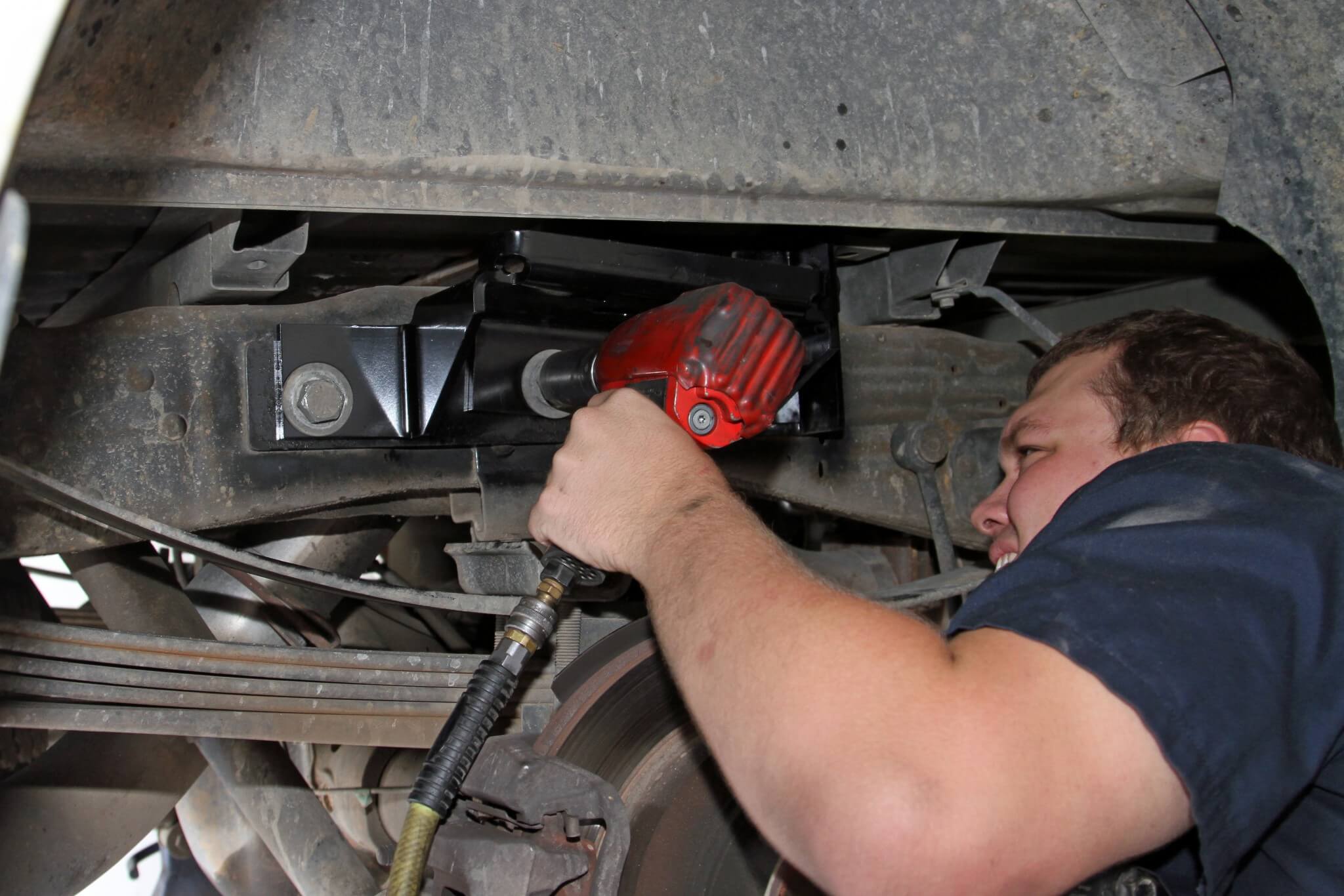
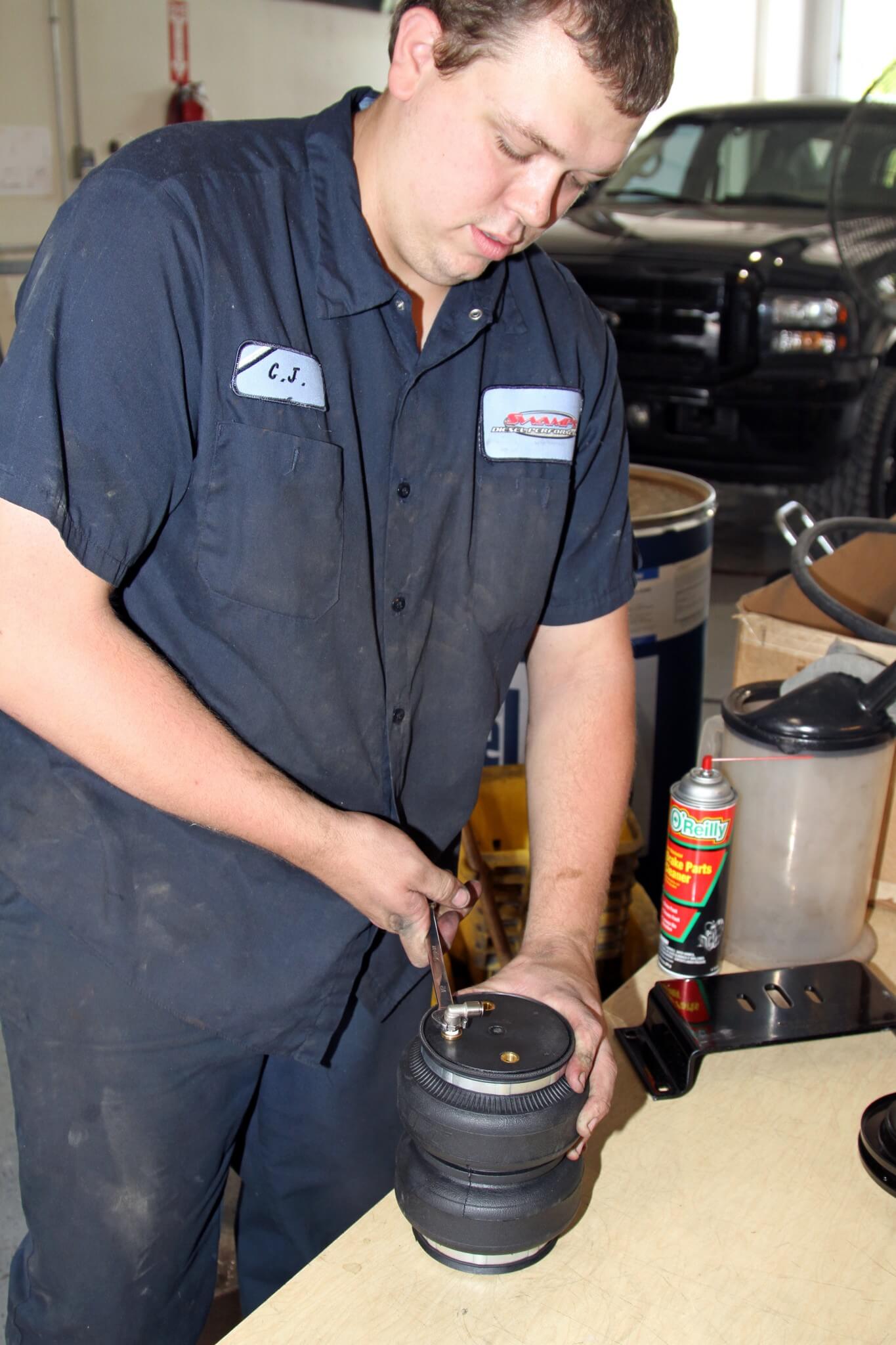
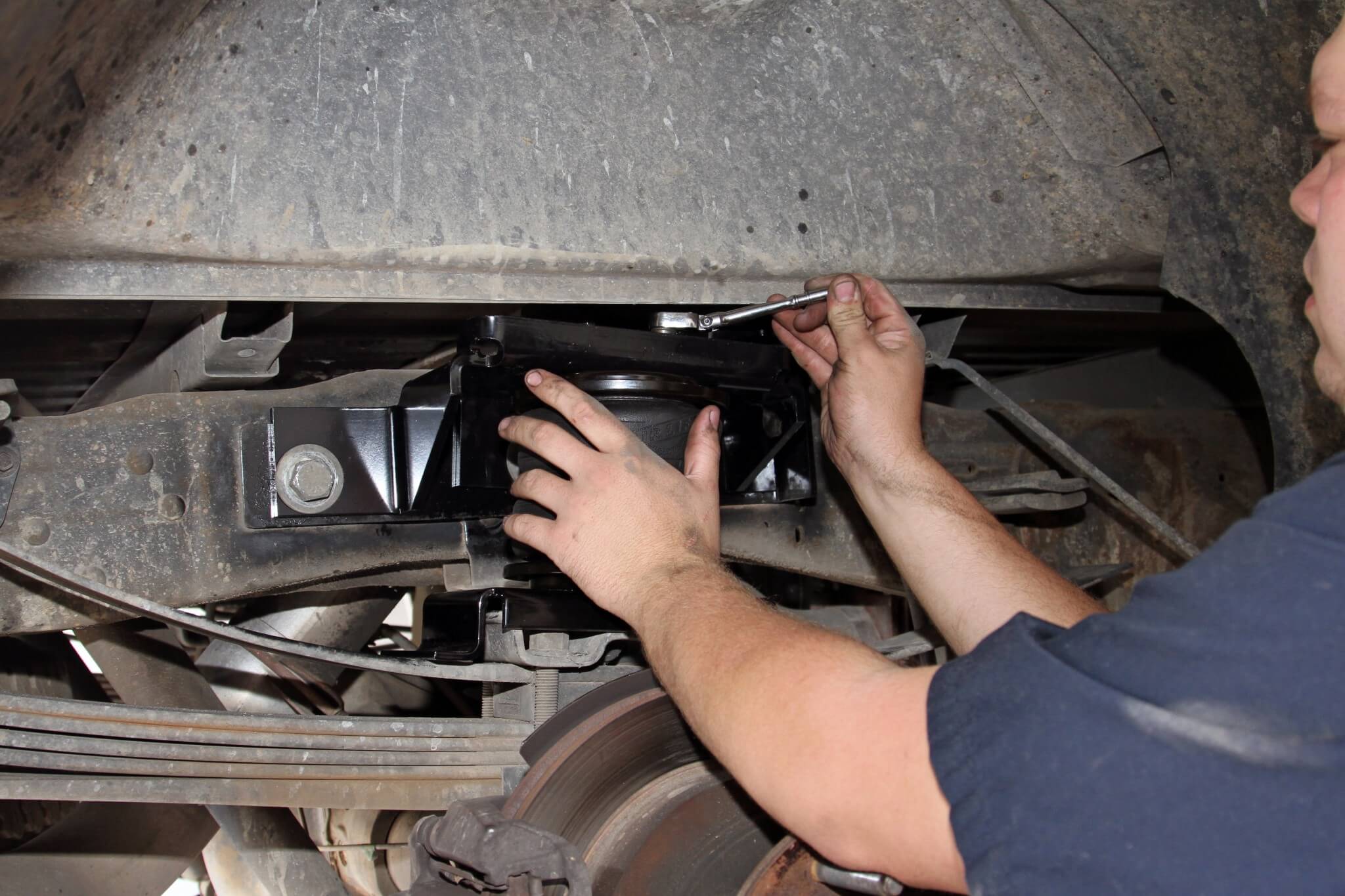
Remember that installing air springs on your truck is not a magical solution that will cure all your towing and hauling woes, and it will not increase the GVWR (Gross Vehicle Weight Rating) of your truck. The air springs can improve handling, and also providing the capability to tune your suspension to your given load. This will allow you to properly level the load for best weight distribution. Additionally, as the air springs compress, they get progressively stiffer, helping to soak up bumps of all sizes, making the ride safer and more comfortable.
With the Air Lift systems installed on his truck, Uriah has the flexibility to tow and haul various loads, without driving and safety compromises from a sagging rear end. He hooked a flatbed trailer to the truck and loaded an 8,000-lb. skid steer on the trailer to check out the system’s capability. With the skid steer backed onto the trailer as close to the tongue as possible to approximate a worst-case scenario, the rear of the truck squatted to the point where the chains were touching the ground. An obvious dip at the hitch was present, with the air springs at 5-psi. Increasing the pressure to the 100-psi maximum leveled the truck and trailer combination while raising the rear of the truck 2 full inches as measured at the gap between the rear tire and fender.
If you frequently tow and/or haul various weight loads like Uriah does, you owe it to yourself to strongly consider one of the many Air Lift air spring and compressor systems available for your truck. You’ll be glad you did and so will everyone else who shares the road with you. Stay tuned for the next issue of Diesel World where we will upgrade the turbo and wrap up our 7.3L Work Truck Project. DW
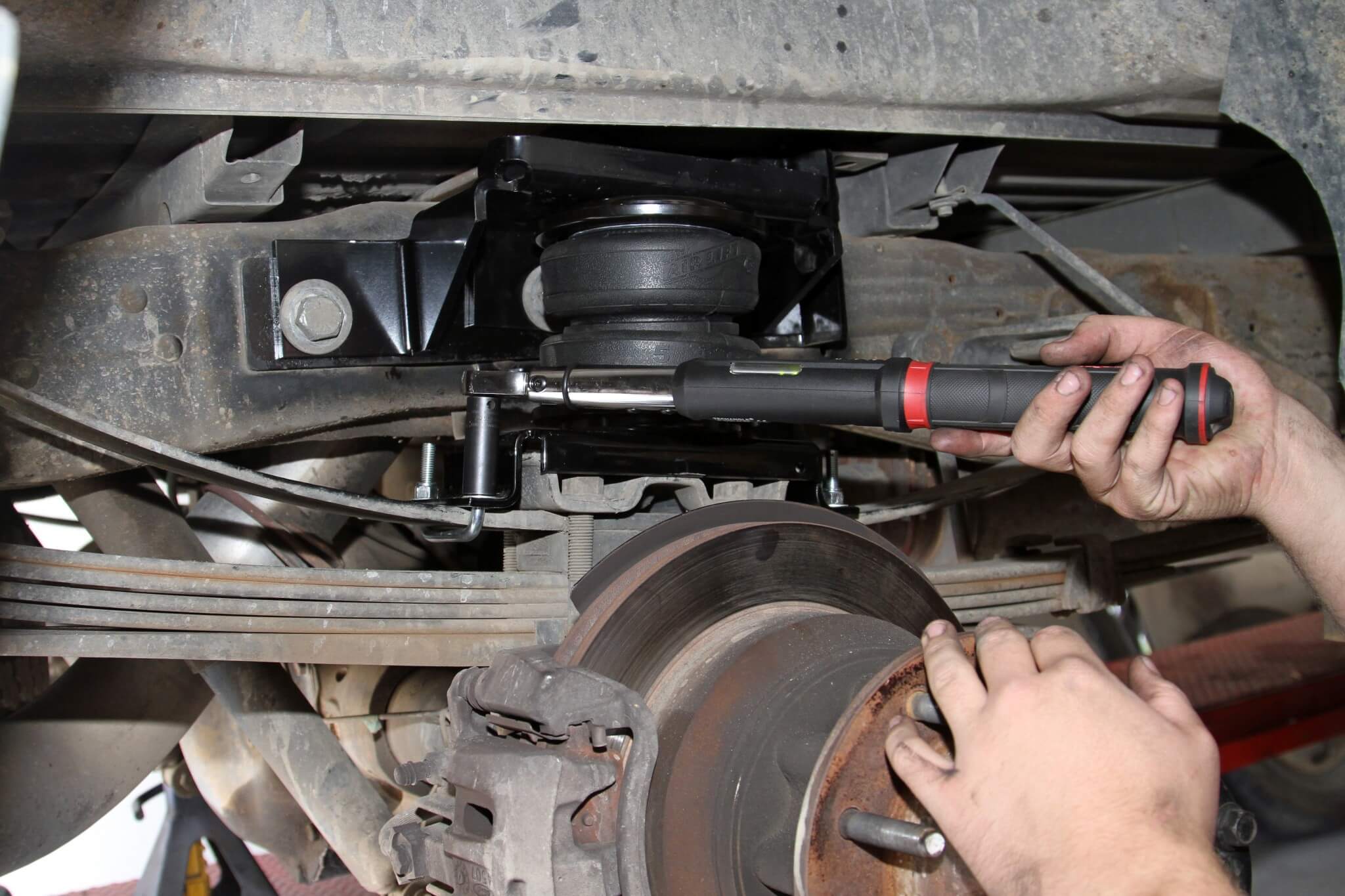
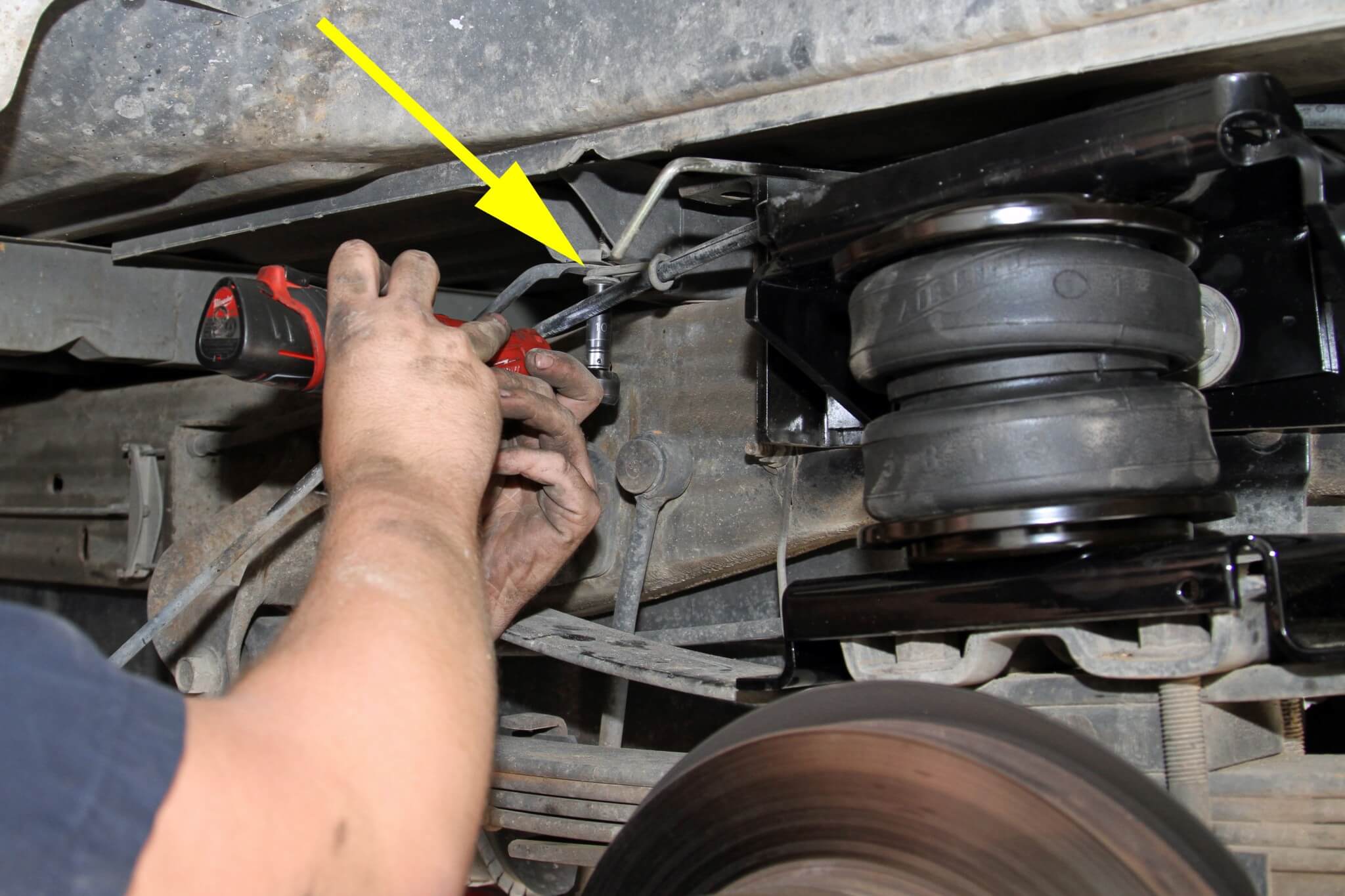


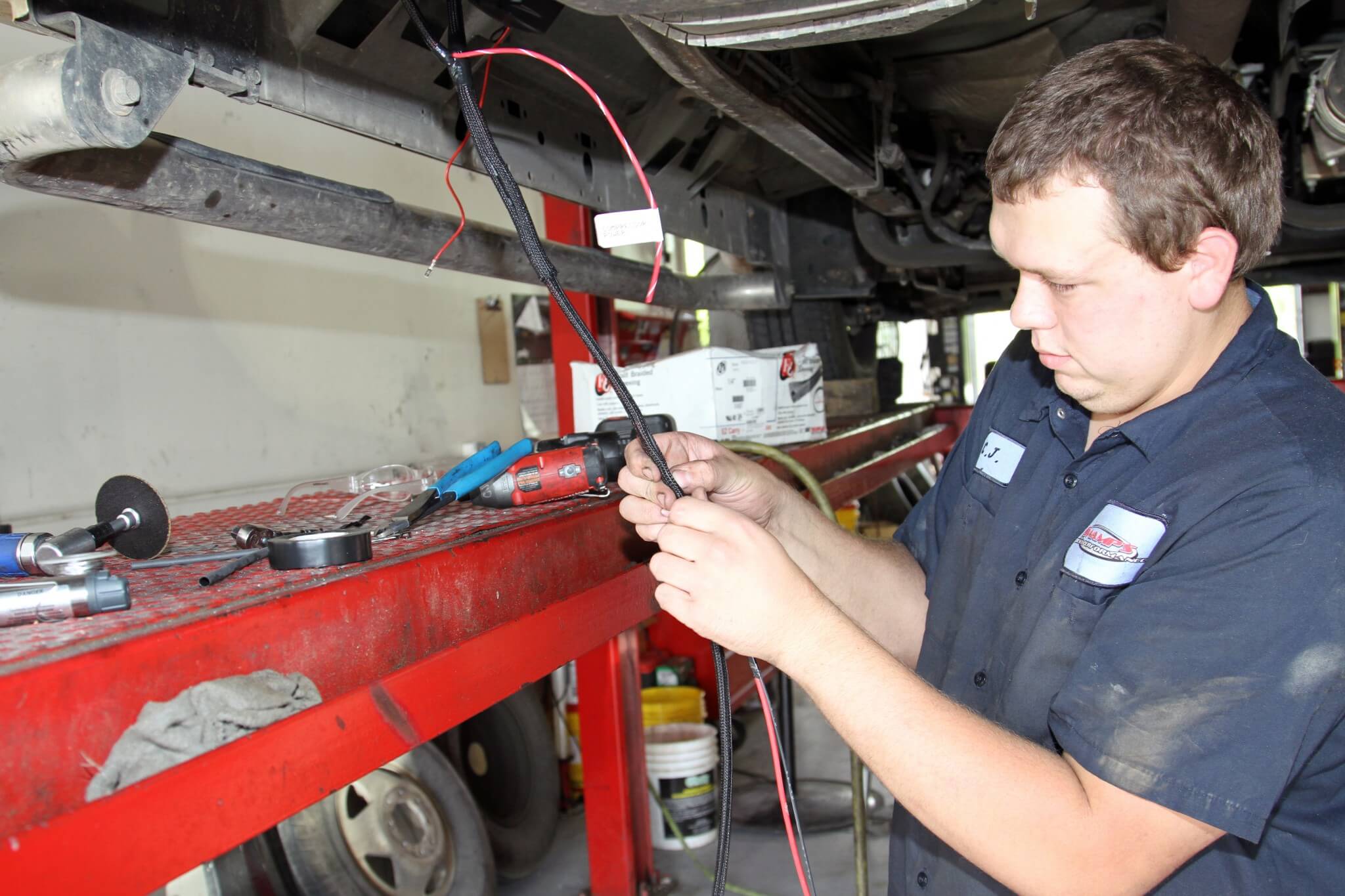


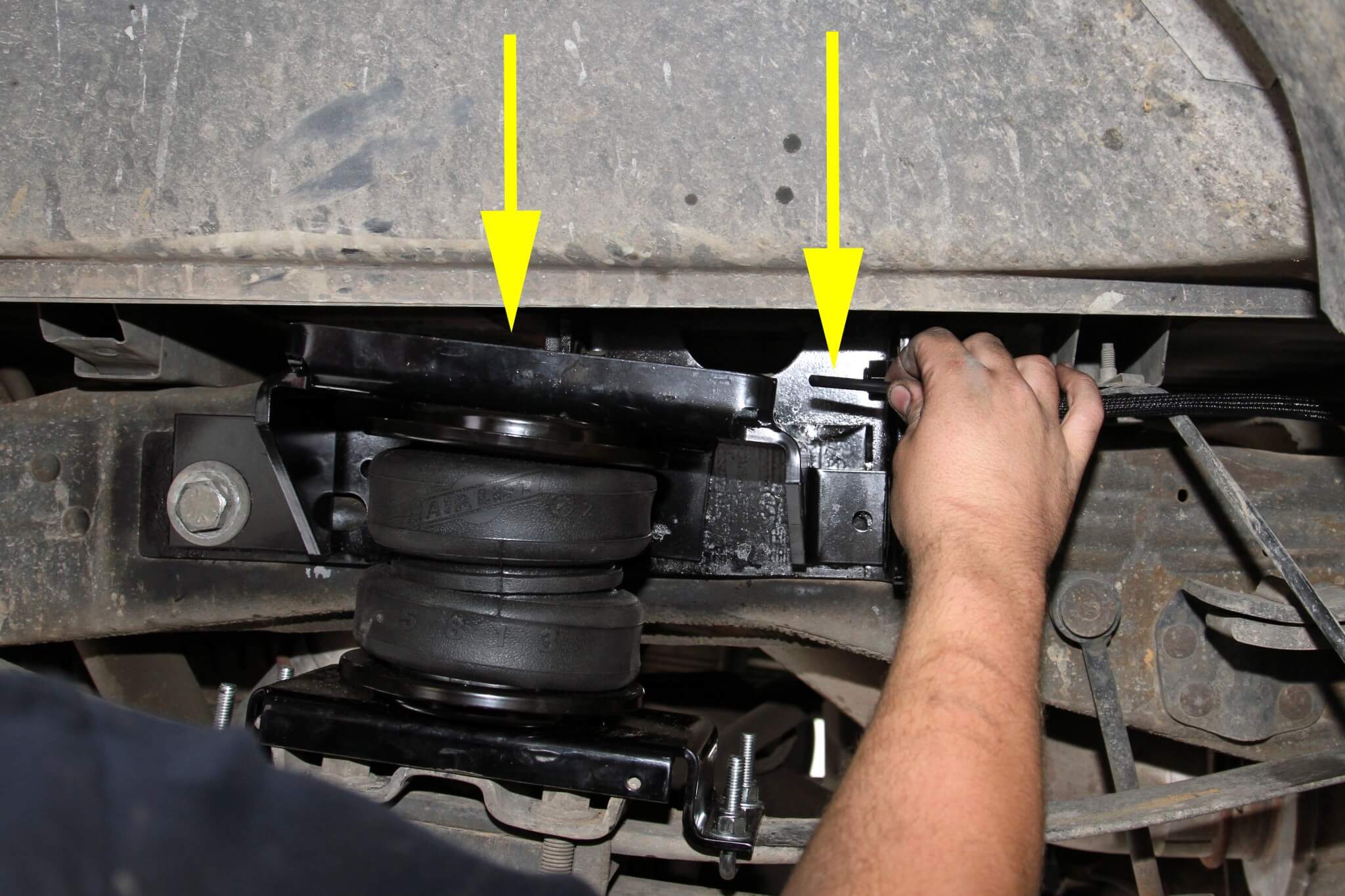
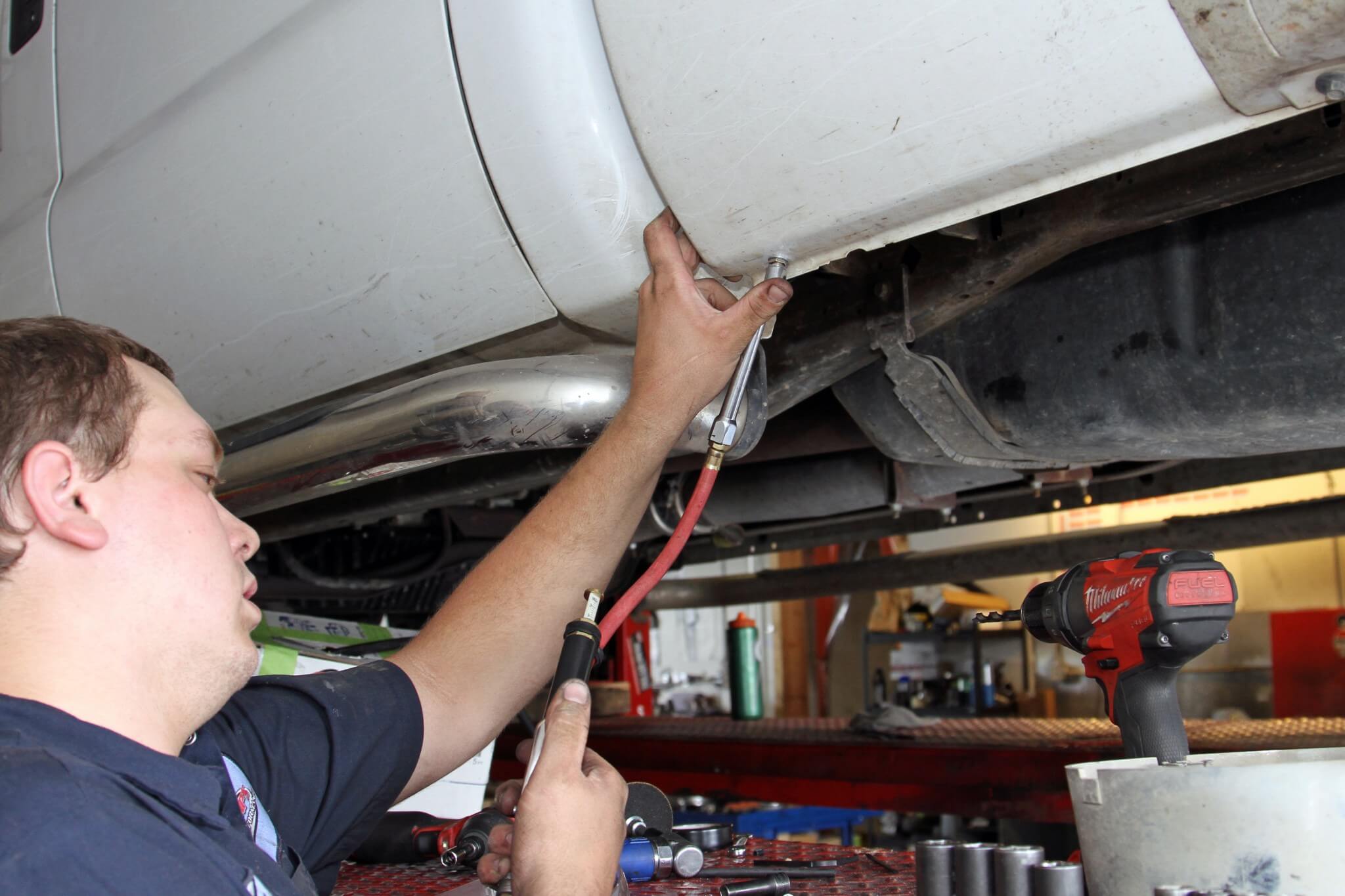
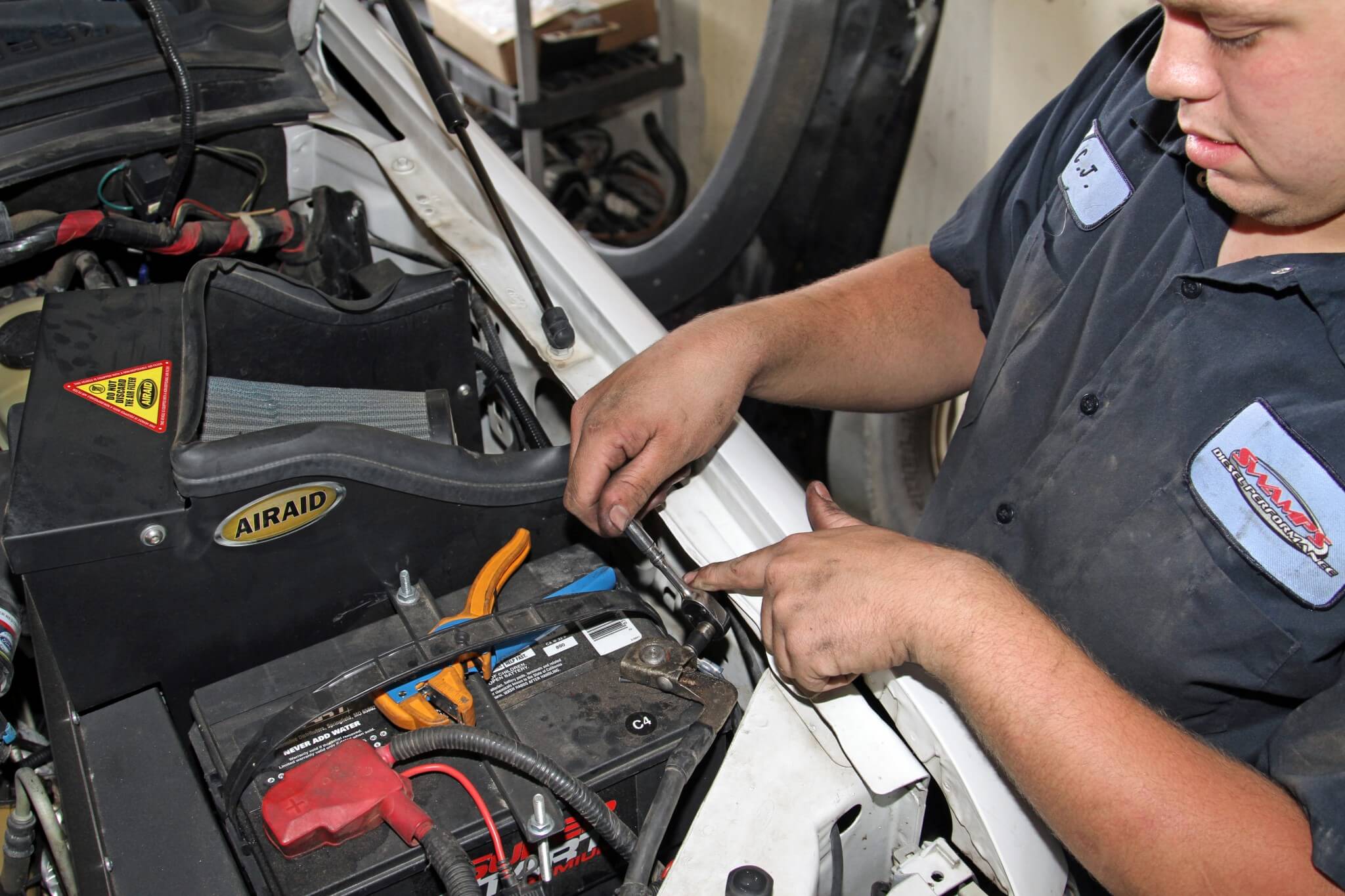
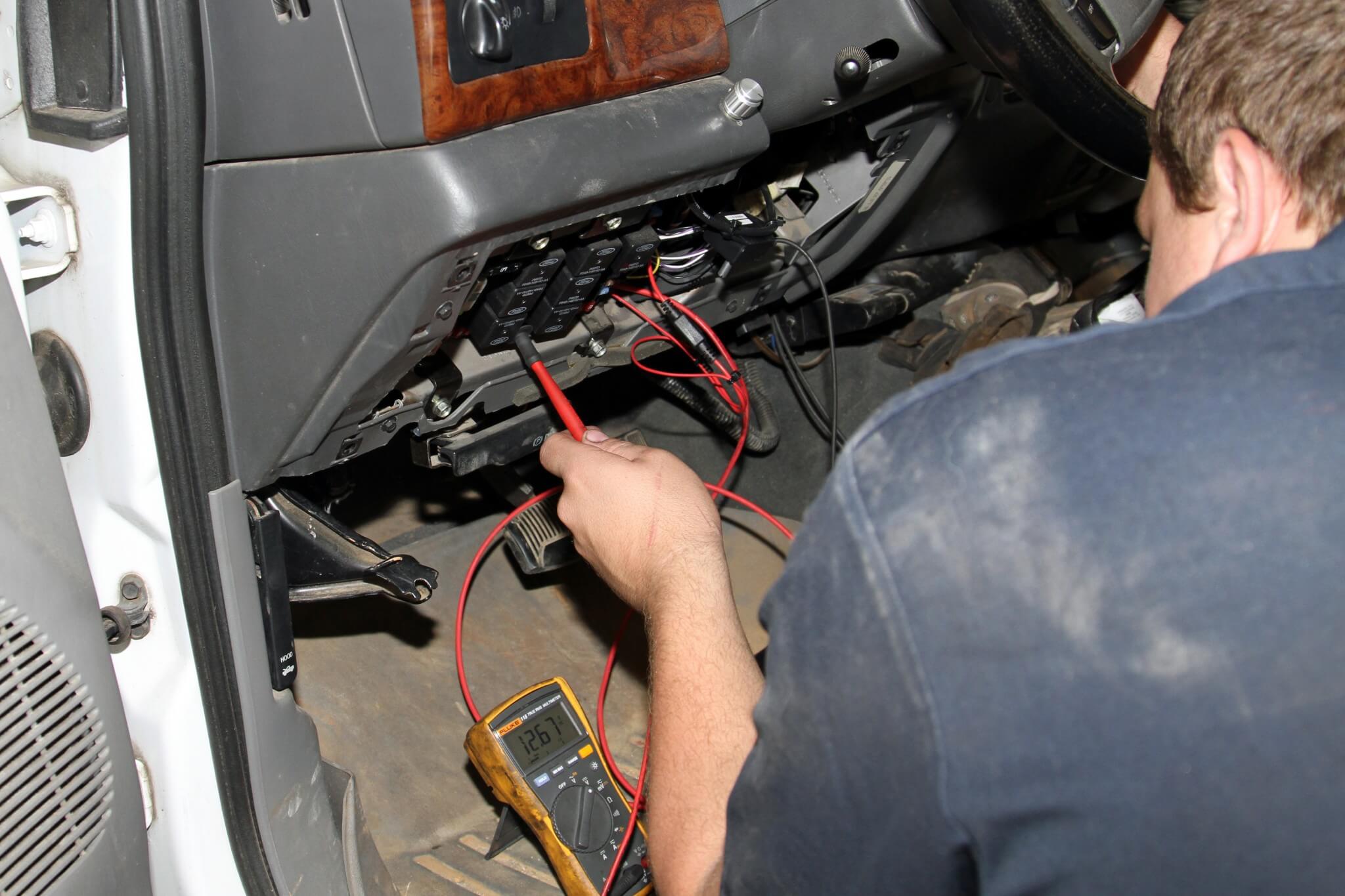
He then connected the fuse holder to the fuse box with the included fuse tap and connected the other end to the power harness with the supplied heat shrink butt connector.
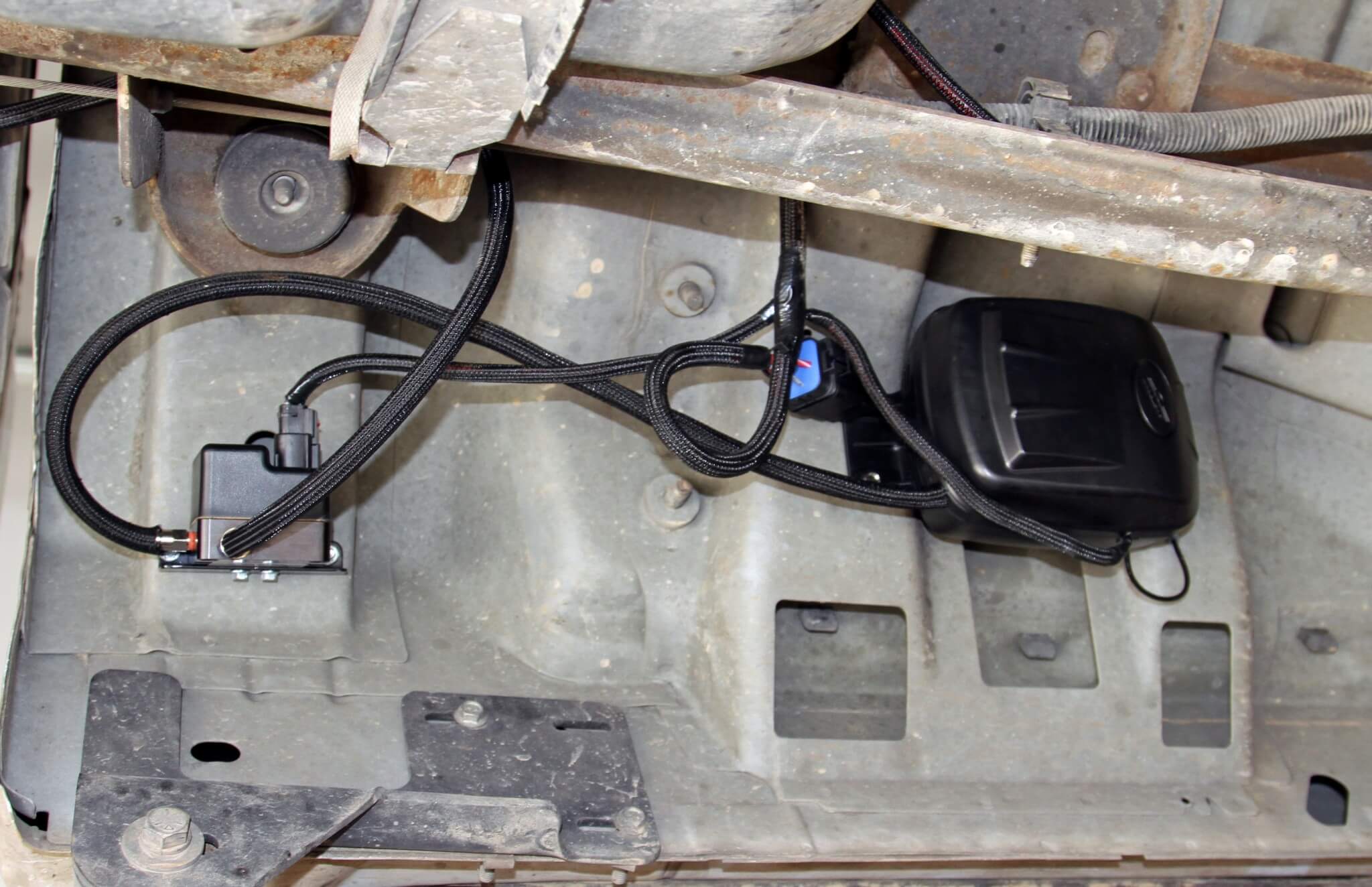
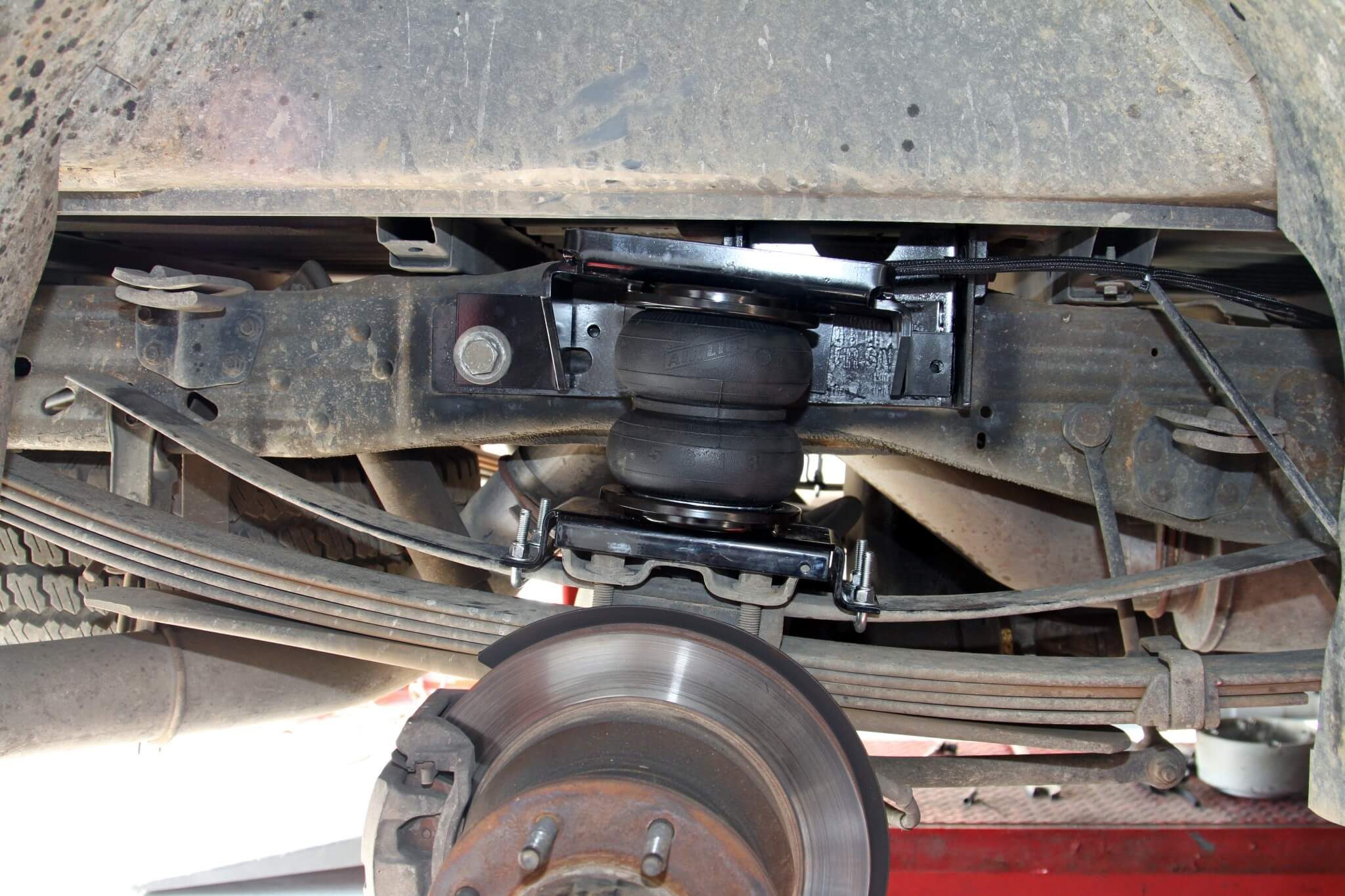
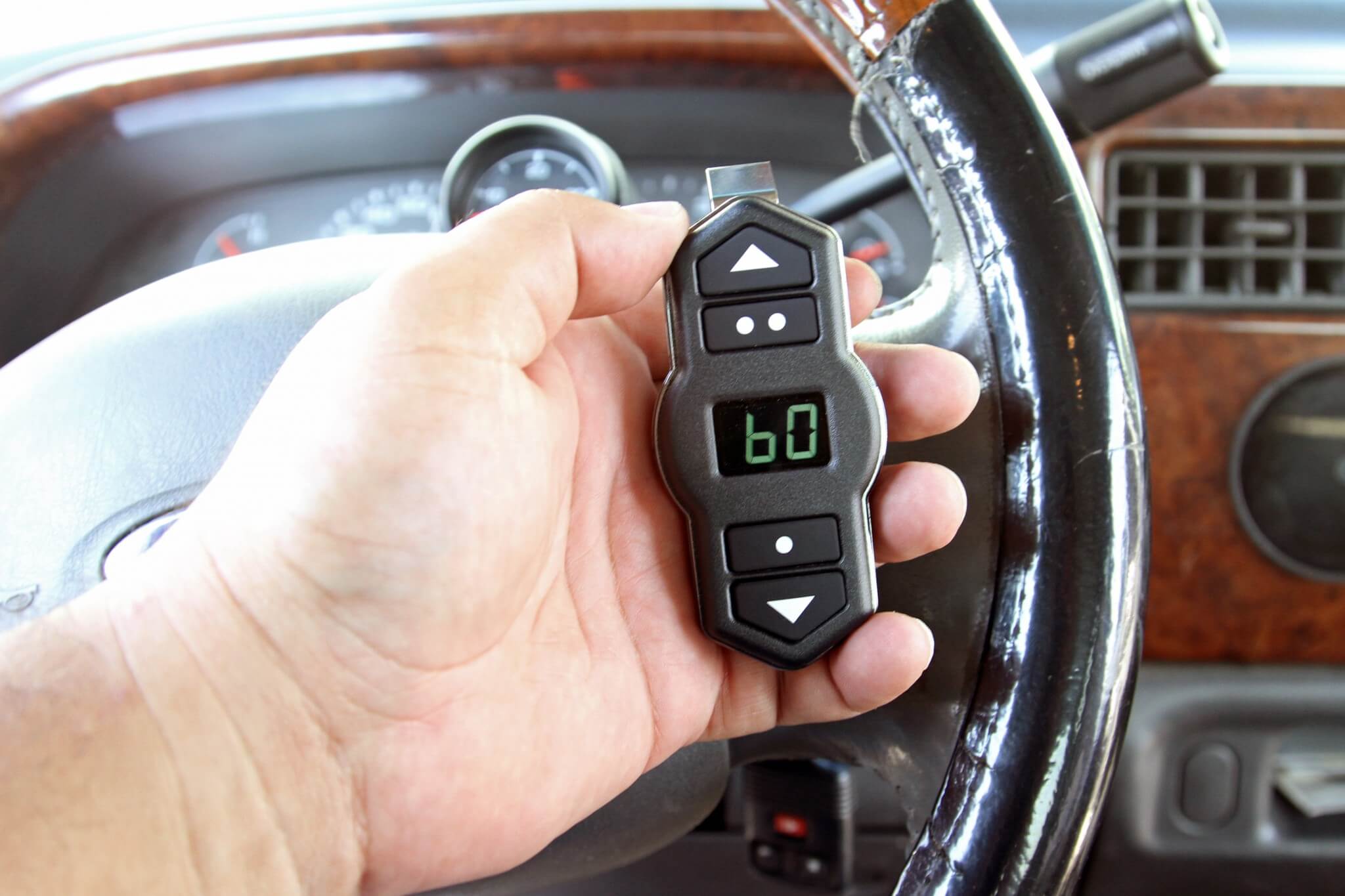
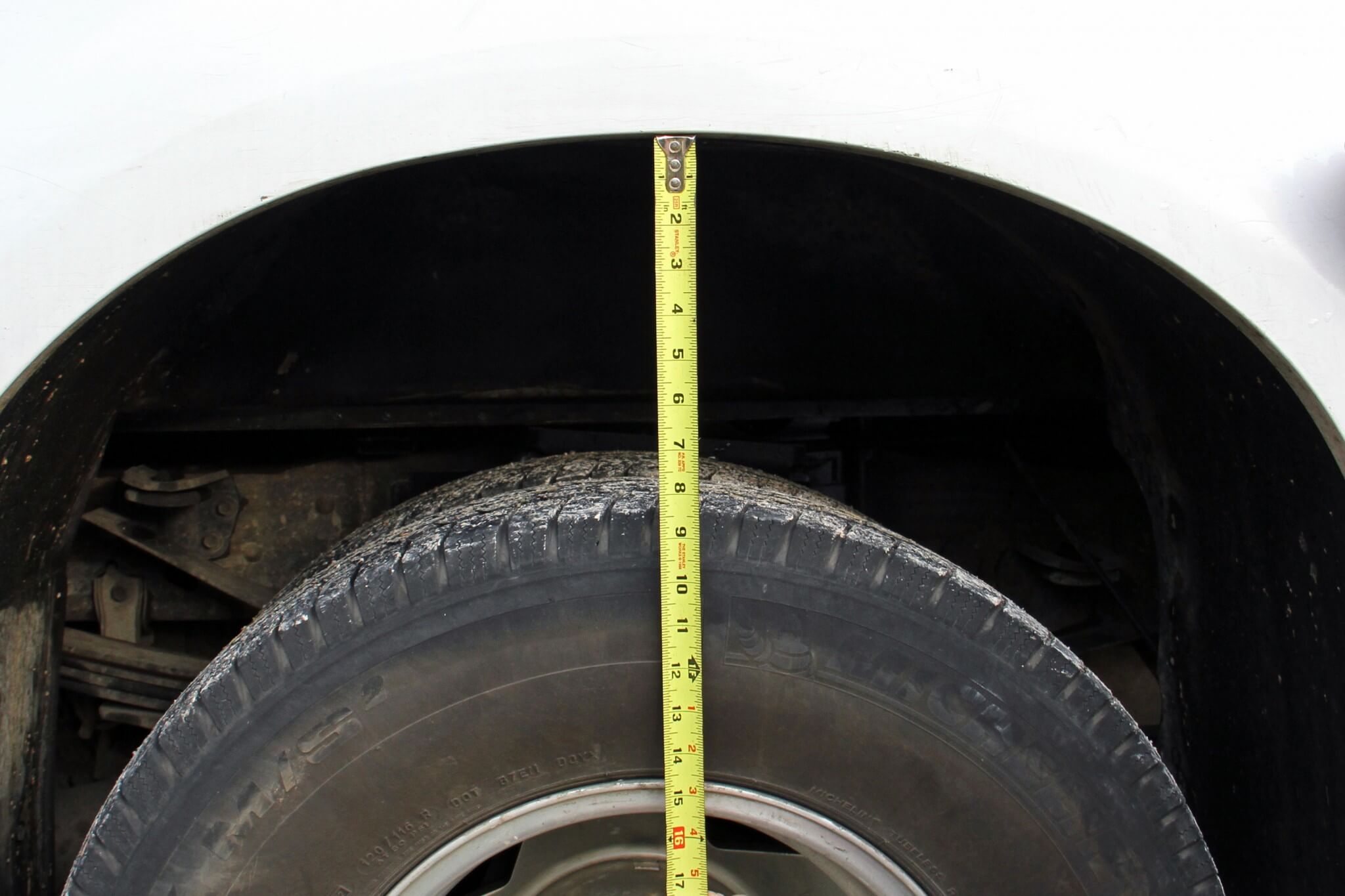
SOURCES:
Air Lift Company
800.248.0892
Swamp’s Diesel Performance
866.595.8724



